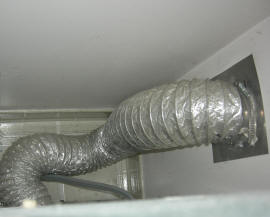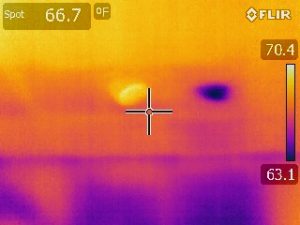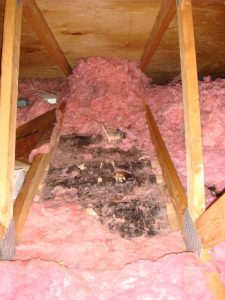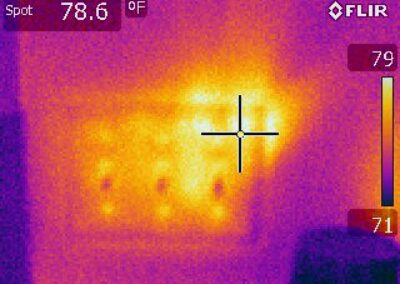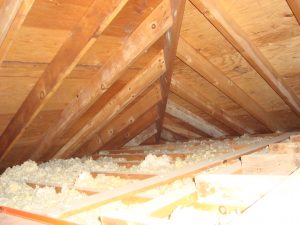 I went out to do an energy audit at Massanutten yesterday. The home was clearly well maintained. It was 30+ years old, was not showing signs of neglect, and the heat was ON. It was very warm inside just like the homeowners like it. We took a moment to talk about their concerns and I learned they just wanted to make sure the home was in good shape as it pertains to energy efficiency. They told me about adding insulation in various places around the home. They talked about keeping the thermostat higher than normal because they like it warm. The talked about appliances that were a little old and had concerns they might have to replace them.
I went out to do an energy audit at Massanutten yesterday. The home was clearly well maintained. It was 30+ years old, was not showing signs of neglect, and the heat was ON. It was very warm inside just like the homeowners like it. We took a moment to talk about their concerns and I learned they just wanted to make sure the home was in good shape as it pertains to energy efficiency. They told me about adding insulation in various places around the home. They talked about keeping the thermostat higher than normal because they like it warm. The talked about appliances that were a little old and had concerns they might have to replace them.
-

Dryer vent problems
They did not mention high electric bills – so I asked. They have average electric bills. So overall – the house was performing really well, keeping them warm, and the electric bills were not killing them. So I found the normal leaks – around electrical outlets, doors, windows, cabinets, and attic access. The framing intersection at the top of basement wall glowed from all the energy leaking through. The light bulbs could all be changed to LED to cut energy usage. The doors needed a little weather-stripping attention.
So it was a normal energy audit. They could probably cut their energy usage by 30% with a few minor changes and I gave them names of people who could help with fixing it. So was it worth my trip out? YES. I found two major issues for them that neither of us expected.
The two major issues we found doing an energy audit:
- Their dryer vent was long, had multiple dips in it, and from a brief test, appeared to be mostly clogged in one place and had considerable lint build up in several other places. This can easily lead to a fire. So I asked them to have that looked at immediately. Hopefully they will take care of it before it becomes a story on the news.
- The second major issue was multiple, more than 6, places in the attic that appeared to either be roof leaks or nests. A more fit energy auditor – like Building Knowledge – would have gotten up in the attic to verify the issue. However, if you call for a free audit from the overweight architect, I will simply give you a name of someone who can climb through the attic scuttle and determine the problem. Either way, they were losing energy through their attic insulation that had been moved away or gotten wet. Fixing this issue and adding a layer of insulation (while plugging the holes causing the problem) will certainly make their home more comfortable and eliminate any uninvited guests from living in their attic.
So, my 1 hour free energy audit gave them a list of things to fix in their home that could lead to a 30% reduction in energy usage, but it also identified roof leaks and squatters. It also hopefully prevented a fire that looked like it was ready to happen. If you want an energy audit, give me a call.
-

Attic nest

